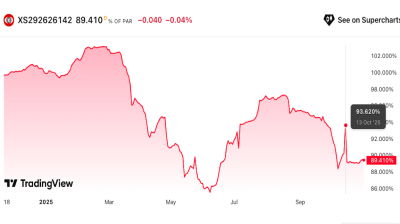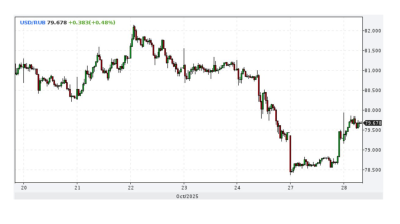Turkey’s short-term external debt stock moved up by 3% m/m to $125.5bn at the end of April, the highest level recorded since March 2015, the country's central bank said on June 18.
External debt maturing within one year or less regardless of the original maturity stood at $183.3bn at the end of April, up from $181.8bn as of end-Q1.
The short-term external debt stock grew by 16% y/y to $118bn at the end of 2017 from $101.5bn at the end of 2016.
A trio of top Turkish banks saw their borrowing costs hit record highs on June 15 as mounting pressure on the Turkish lira (TRY) ahead of the June 24 elections sparked more selling on Turkey’s bond markets, Reuters reported.
The dizzying descent of the TRY, meanwhile, is hurting Turkish companies that have borrowed on the international markets, making it more costly in lira terms to repay their debt. Rising bond yields caused by secondary market selling will make it more expensive for Turkey and Turkish corporates when they go for fresh debt issuance.
The story of the TRY’s collapse in recent months is not for the faint-hearted. Despite the central bank’s emergency action, the country could still go over the cliff edge and slip into a classic emerging market currency-and-debt crisis.
Turkey is heavily dependent on external borrowing due to its chronic current account deficit. Debt-financed consumption has been the prime feature of the country’s remarkable economic growth achieved during much of the past decade, while the private sector’s share in total external borrowing has been on the rise in recent years.
Ukraine and Turkey are two of the “vulnerable three" countries most at risk to US tightening along with Argentina, Fitch said in a note on May 16.
Turkey’s current account deficit widened by 42% y/y to $47.1bn in 2017, driven by rising gold imports and energy prices.
Its gross external debt stock rose by 11% y/y to reach $453bn by the end of 2017, the Treasury said on March 30.
The gross external debt stock corresponded to 53.3% of GDP at the end of 2017, the highest level recorded since Q1 2003.
Turkey's net external debt stock also increased by 3% q/q and 15% y/y to $291bn as of the end of 2017. The net external debt stock to GDP ratio rose to 34.2% at end of Q1, the highest level recorded since Q2 2003.
Signs of major conglomerates struggling to pay their hard currency-denominated debts have set off alarm bells.
“There is a risk of a hard landing for Turkey’s overheating, credit-fueled economy,” S&P said on May 1 when it cut Turkey’s credit rating further into junk. “This is reflected in the rising imbalances in Turkey’s economy, most notably in its widening debt-financed current account deficit and high inflation.”
On April 16, Moody’s issued a note saying that the prolonged weakness of the TRY combined with high inflation would likely increase problem loans for Turkey’s banks as the private sector would have a tougher job on its hands to repay its foreign currency-denominated debt.
Turkish President Recep Tayyip Erdogan (RTE) on June 14 threatened to conduct an “operation” against ratings agency Moody’s Investors Service, less than two weeks after it placed Turkey on review for a downgrade, Turkish media reported.
Analysts see Turkey's economic health as dangerously reliant on hot inflows of foreign external financing to enable growth. Turkey, loaded up on hard-currency debt, is badly exposed by the severe devaluation of the TRY.
Data

Russia’s manufacturing PMI falls to its lowest level since May 2022 in October
Russia’s manufacturing sector saw a deeper contraction in October, with output, new orders, and business confidence all weakening, according to the latest Purchasing Managers’ Index (PMI) data from S&P Global, published on November 1.

Czech growth accelerates as domestic demand-side pressure builds
The Czech economy delivered an unexpected acceleration in the third quarter, marking a clear shift from its earlier position as a regional underperformer to one of Central and Eastern Europe’s fastest-growing economies.

Eurobonds of Istanbul-listed Zorlu units offer attractive yields amid rating downgrades and no default expectation
Debut paper currently offering 14-15% yield.

Ruble strengthens as sanctioned oil companies repatriate cash
The Russian ruble strengthened after the Trump administration imposed oil sanctions on Russia’s leading oil companies, extending a rally that began after the Biden administration imposed oil sanctions on Russia in January.




